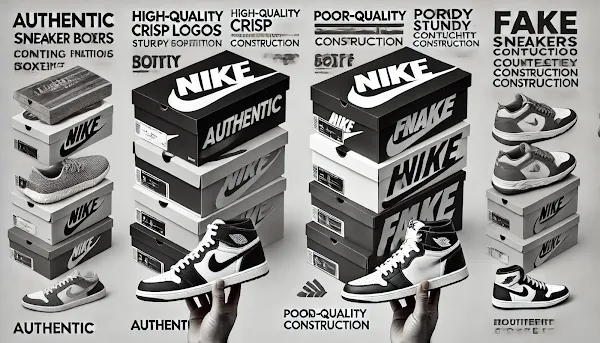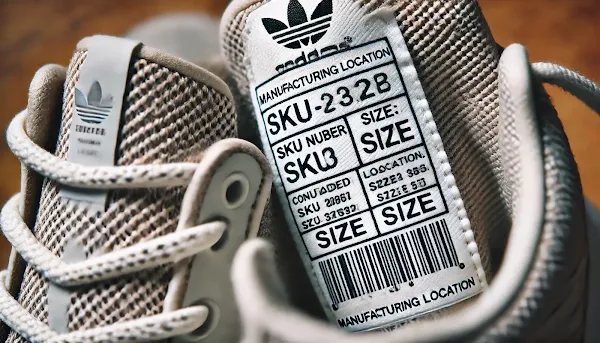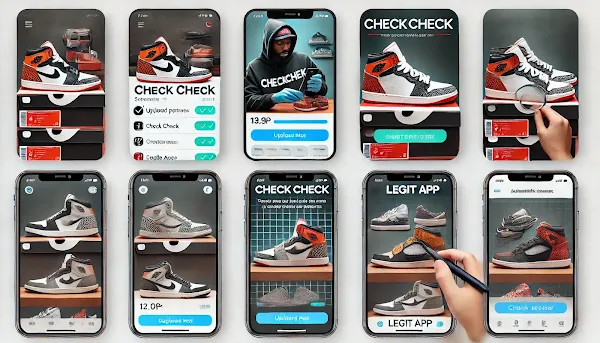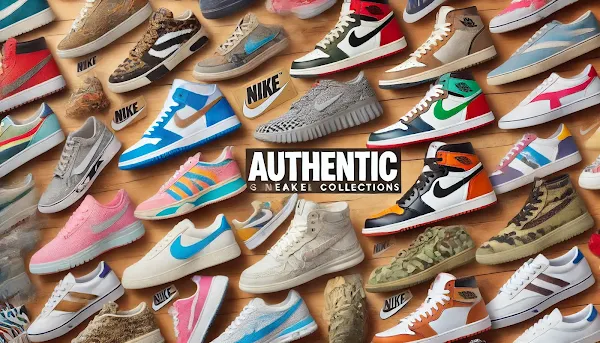How to Spot Fake Sneakers: A Comprehensive Guide
Outline
- Introduction
- 1. Packaging and Box Inspection
- 2. Labels and Tags
- 3. Stitching Quality
- 4. Material and Build
- 5. Logo and Branding
- 6. Outsole and Midsole
- 7. Price and Purchase Source
- 8. Authentication Services
- Conclusion
Introduction
In the world of sneaker enthusiasts, nothing dampens the excitement of a new purchase more than discovering that your prized sneakers are fake. With counterfeit sneakers becoming increasingly sophisticated, even the most seasoned sneakerheads can be fooled. Whether you're a collector or just someone who loves a good pair of kicks, knowing how to spot a fake is essential. This guide will walk you through the key areas to check, ensuring you get what you pay for and keep your sneaker game authentic.
Top1. Packaging and Box Inspection
The first step in identifying counterfeit sneakers begins with the packaging. Genuine sneakers come in high-quality boxes with precise printing and robust construction. The box should feel sturdy and have clear, crisp logos. Pay close attention to the label on the box, which includes details like the SKU number, shoe size, and manufacturing information. This SKU number should match the one found on the label inside the shoe.
Counterfeit packaging often has telltale signs such as misspelled words, poor-quality printing, and flimsy construction. If the box is damaged or looks cheaply made, it’s a red flag. Additionally, reputable sellers will always ship sneakers in their original boxes unless otherwise stated. If your sneakers arrive in a plastic bag or wrapped in paper, it's likely they're fake.
Top2. Labels and Tags
Inside the shoe, you should find a label with detailed information, including the SKU number, size, and manufacturing location. This label is typically located on the tongue or inside lining of the shoe. The printing on this label should be clear and accurate. If the information is smudged, misaligned, or missing, it’s a strong indicator of a counterfeit product.
Furthermore, counterfeit sneakers often have inconsistencies in the SKU numbers. Always check that the SKU on the label matches the one on the box. Authentic sneakers will have matching numbers, while fakes often get this detail wrong.
Top3. Stitching Quality
One of the most reliable ways to spot fake sneakers is by examining the stitching. Authentic sneakers feature precise, consistent stitching. The threads should be evenly spaced and securely fastened without any loose ends. Counterfeit sneakers, on the other hand, often have sloppy stitching with uneven spacing and loose threads.
Look closely at areas where stitching is prominent, such as the seams around the toe box, heel, and sides of the shoe. Any signs of rushed or careless stitching can indicate a fake. Additionally, counterfeiters may use inferior thread that frays easily, further compromising the shoe's appearance and durability.
Top4. Material and Build
The materials used in authentic sneakers are another crucial factor to consider. Genuine sneakers are made from high-quality materials that feel premium to the touch. The leather should be smooth and supple, the mesh should be tightly woven, and any plastic components should be sturdy and well-finished.
Counterfeit sneakers often use cheaper materials that can feel off. The leather might be rough or overly shiny, the mesh may appear loose or poorly woven, and plastic parts could look brittle or poorly finished. One distinct giveaway is the smell of the materials. Genuine sneakers have a particular new shoe smell, whereas fakes often have a strong chemical odor due to the lower-quality materials used.
Top5. Logo and Branding
Brand logos and unique branding elements are critical indicators of authenticity. Major sneaker brands like Nike, Adidas, and Jordan have specific details that counterfeiters often get wrong. For instance, the Nike Swoosh should be perfectly symmetrical and securely stitched or glued without visible marks. The Air Jordan logo should be crisply printed with no blurring or uneven edges.
Pay close attention to any brand-specific features. For Nike Air Jordans, the hologram on models like the Jordan 13 should change color when viewed from different angles. Counterfeit sneakers might replace this with a simple sticker. Similarly, check for accurate placement and quality of brand logos on the heel, tongue, and sides of the shoe. Any misalignment or poor craftsmanship in these areas can indicate a fake.
Top6. Outsole and Midsole
The outsole and midsole of a sneaker are also key areas to inspect for authenticity. Authentic sneakers have high-quality outsoles with distinct, well-defined patterns that provide excellent traction. The rubber used should feel durable and flexible, not brittle or overly stiff.
Examine the midsole for the brand’s signature cushioning technology. For example, Nike's Air technology should provide noticeable cushioning when you press the midsole. Counterfeit sneakers often lack this feature or use inferior materials that do not provide the same level of comfort and support. The outsole pattern should be consistent with the official design, and any irregularities can signal a fake.
Top7. Price and Purchase Source
One of the most straightforward ways to avoid counterfeit sneakers is to be wary of the price. If a deal seems too good to be true, it probably is. Authentic high-demand sneakers usually come at a premium price, especially in the resale market. Significant price discrepancies should raise suspicion.
Always purchase sneakers from reputable sources. Trusted retailers and platforms like StockX and GOAT have robust verification processes to ensure authenticity. They use a combination of machine learning technology and expert inspection to authenticate sneakers. Avoid purchasing from unknown websites, social media, or individuals without a proven track record. These sources are often the most likely to sell counterfeits.
Top8. Authentication Services
In addition to careful inspection, using third-party authentication services can provide extra assurance. Apps like CheckCheck and LEGIT APP offer verification services where you can upload photos of your sneakers for experts to review. These services use a combination of AI and human expertise to detect inconsistencies that may indicate a fake.
Resale platforms like StockX and GOAT also offer authentication guarantees. When you buy through these platforms, the sneakers are inspected by experts before being shipped to you. This added layer of security can give you peace of mind when making high-value purchases.
TopConclusion
Spotting fake sneakers requires a combination of vigilance, knowledge, and caution. By carefully inspecting the packaging, labels, stitching, materials, logos, and soles, and by purchasing from reputable sources, you can significantly reduce the risk of ending up with counterfeit shoes. Remember, if a deal seems too good to be true, it probably is. Use the tips and tricks in this guide to ensure your sneaker collection remains authentic and valuable.
Ensuring authenticity is not just about protecting your investment but also about preserving the integrity and culture of sneaker collecting. Stay informed, stay cautious, and enjoy your sneaker journey with confidence.
Top








